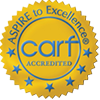Your colleague on the night shift is a stellar nurse. Her background, experience, and demonstrated skills are top-notch. She is working extra shifts to help cover expenses while her husband is between jobs. While raising three young children, she also cares for her severely disabled father. You wonder how she does it all.
This description fit Patricia Holloran, RN, whom friends and colleagues regarded as a “super nurse”—until hospital administration and the Connecticut Department of Health confronted her for drug diversion.
Holloran was introduced to the nasal spray butorphanol (Stadol) when her doctor changed her migraine prescription. She often administered the injected form of this powerful narcotic to women in labor. When the women did not require a full dose, Holloran justified using the leftovers to help her sleep after a long night shift. It also helped her cope with the stress of taking on extra shifts, being the primary breadwinner, and caring for her three sons—along with her father, who suffered from rheumatoid arthritis. Months later, she was pocketing whole vials from the dispenser. “Stadol is not physically addictive,” Holloran said. “I thought I could stop at any time. I was wrong.”
Holloran details her spiral into drug dependence and arduous path back to hospital nursing practice in her recent book, Impaired: A Nurse’s Story of Addiction and Recovery (Kaplan Publishing, 2009). Her story shows that, with determination and support, nurses who suffer from addiction can recover and regain their practices.
Read the full article: Modern Medicine Network








